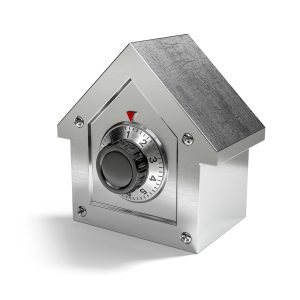Garages are more than just parking spots; they serve as workshops, storage units, and sometimes even extra living spaces. However, without proper precautions, they can become breeding grounds for pests. A garage provides pests with a place to hide, stay warm, and possibly find food. These unwanted visitors can enter your garage more effortlessly than other parts of your home, but with proper steps, you can eliminate them and prevent them from entering again.
This guide will teach you about the different kinds of pests commonly found in garages, their hiding spots, and methods for getting rid of them.
Most Common Garage Pests You Can Encounter
Understanding what attracts specific types of pests helps tailor prevention strategies more effectively:
- Rodents (Mice, Rats): These critters seek warmth during colder months along with food sources year-round—cluttered garages provide both! They’re known carriers of diseases so keeping them out is crucial.
- Spiders (Various Species): Garages typically harbour dark corners perfect for web-spinning activities; some species may even pose health risks due to venomous bites!
- Ants (Carpenter, Argentine, etc.): Often drawn towards sugary substances inadvertently left behind after projects involving woodwork or sawdust spills among others—they establish colonies quickly once settled indoors!
Fill Gaps Around Doors and Windows
It’s a no-brainer that pests need to enter from somewhere and it usually is through gaps, including those under doors and around windows; sometimes even through small hotels in the walls. Even small cracks or openings can be an invitation for insects like ants or, believe it or not, larger creatures like mice.
Create Seals with Weather Strips
The main purpose of weatherstripping is to keep outside elements out of your house by sealing the edges of your windows and doors. It’s commonly available in the shape of foam tape, felt strips, and metal channels.
If you use weather strips to fill gaps around your garage door, you’ll successfully stop one of the pests’ most popular entry methods. Another plus is that proper weather stripping might also help to reduce outside noise pollution. What’s not to love about it?
Fill in Gaps with Caulk
Of course, weather strips can’t fix all problems. The gaps and fissures around windows should be sealed as well, and you can use the widely available caulk.
There are two types of caulk:
- Latex-Based Caulk: Flexible and durable; ideal for use on interior surfaces because it can be painted over. Once applied, latex-based caulk stays flexible, so it won’t crack readily even with small movements in building components.
- Silicone-Based Caulk: Highly resistant to moisture; best suited for exterior applications due to its durability against varying weather conditions.
Besides the more obvious benefit of preventing water damage by sealing leaks around plumbing fixtures or roof joints, caulk can make the space look tidier. Filing in the unattractive spaces between the walls and the window frames enhances the appearance.
Door Sweeps
Adding door sweeps at the bottom of your garage door will block off another common access point for smaller insects.
Accurately measure before cutting to ensure proper fitment, as incorrect sizing may make the product ineffective. Fasten securely with screws or nails to prevent it from moving over time because of people walking on it. Consistently inspect the state of the parts and promptly replace any that are worn out to ensure continued effectiveness.
Store Items in Sealed Containers
Pests are attracted to clutter where they can hide easily; storing items improperly adds fuel to this fire. Clutter provides a perfect habitat for pests such as rodents and insects (and besides the pests, even mould). You can imagine when items are left haphazardly or in open containers, it creates numerous hiding spots that make pest control difficult. For example, piles of newspapers or stacks of old cardboard boxes offer dark crevices where pests can breed unnoticed.
Use Plastic Storage Boxes with Lids
Rodents have sharp teeth capable of gnawing through many materials including wood and cardboard but struggle against hard plastics. Tight-fitting lids ensure that no gaps exist through which smaller insects could infiltrate the contents inside.
Use Vacuum Seal Bags
For textiles such as old clothes or holiday decorations stored in garages, vacuum or heat seal bags offer protection from both moisture and pests.
For textiles such as old clothes or holiday decorations stored in garages:
- Protection from Moisture: Vacuum-sealed bags remove excess air which reduces humidity levels inside the bag—an essential factor since many fabrics deteriorate faster when exposed continuously over time under high moisture conditions.
- Barrier Against Pests: By eliminating air pockets within these bags you create an inhospitable environment denying access altogether preventing potential infestations before they begin!
Keep the Garage Clean and Organised
Pests are less likely to thrive in a clean environment, as there are fewer hiding places. Rodents, spiders, and other insects thrive in congested areas because they can easily find food and shelter. And what’s the solution to that? Clean and declutter, of course!
Have a Regular Cleaning Schedule
Sweep floors regularly and ensure no food crumbs are left behind which might attract rodents or ants.
- Sweep the Floors: To be frank, garages receive much less maintenance than the interior of our houses. The less you use a broom in your garage, the more likely pests are to move in and make it their home. Sweep floors with a strong brush or hoover designed for heavy-duty use in garages and concentrate on the corners where dust tends to gather.
- Remove Potential Food Sources: Pests, like other creatures, seek shelter and food. If you remove the food source, you eliminate one of the reasons for bugs to remain in your garage.
Decluttering Tips
Keeping items off the floor as much as possible using shelving units not only maximises space but also reduces hiding spots for pests:
- Invest in metal or plastic shelving units that are easy to clean. These materials do not absorb moisture as wood does—damp conditions can invite termites or mould growth.
- Opt for adjustable shelves so you can customise storage based on item size—from paint cans at eye level (for safety) down to heavier tools closer to ground level (to prevent accidents).
- Store seasonal decorations (e.g., holiday lights) in clear storage bins with lids rather than cardboard boxes which degrade over time, attracting bugs.
- Label each bin clearly; this helps during retrieval without disrupting orderliness.
- Frequently assess stored items; donate or discard those no longer needed.
An annual spring cleaning session allows a reassessment—what’s essential versus what’s just occupying valuable space and creating unnecessary clutter?
Use Traps and Repellents Effectively
Trapping techniques differ based on the type of pest being targeted, with options including humane catch-and-release methods and lethal alternatives (often carried out by exterminators); each with its own advantages and disadvantages that need to be carefully weighed before deciding.
Rodent Control
Snap traps baited with peanut butter and deployed in strategic positions near suspected nest sites or entryways work dependably but must be disposed of afterwards, as opposed to electronic equivalents that provide reuse convenience, albeit at a greater initial cost.
Spider Deterrence
Hidden adhesive traps under shelves catch spiders, while natural deterrents like peppermint or eucalyptus oils in diluted sprays keep out pests without harming beneficial bugs, encouraging eco-friendly living for environmentally-conscious homes.
Ant Management
By mixing boric acid with sugar water, the dual purpose of attracting worker scouts and carrying the lethal concoction back to the colony can result in the eventual eradication of the entire population over time. Additionally, applying commercial barrier sprays to perimeter foundations can prevent future incursions altogether, ultimately achieving the desired comprehensive long-term results.
Final Thoughts
To summarise, pest control in your garage requires a holistic approach that includes sealing entry points to prevent access, maintaining cleanliness to reduce attractants, applying natural or chemical deterrents as needed, and examining for signs of infestation on a regular basis. Implementing these tactics will make your home unattractive to uninvited guests while also protecting it from any harm and health dangers. Remember that prevention is always more successful than treatment—consistent monitoring is essential.




